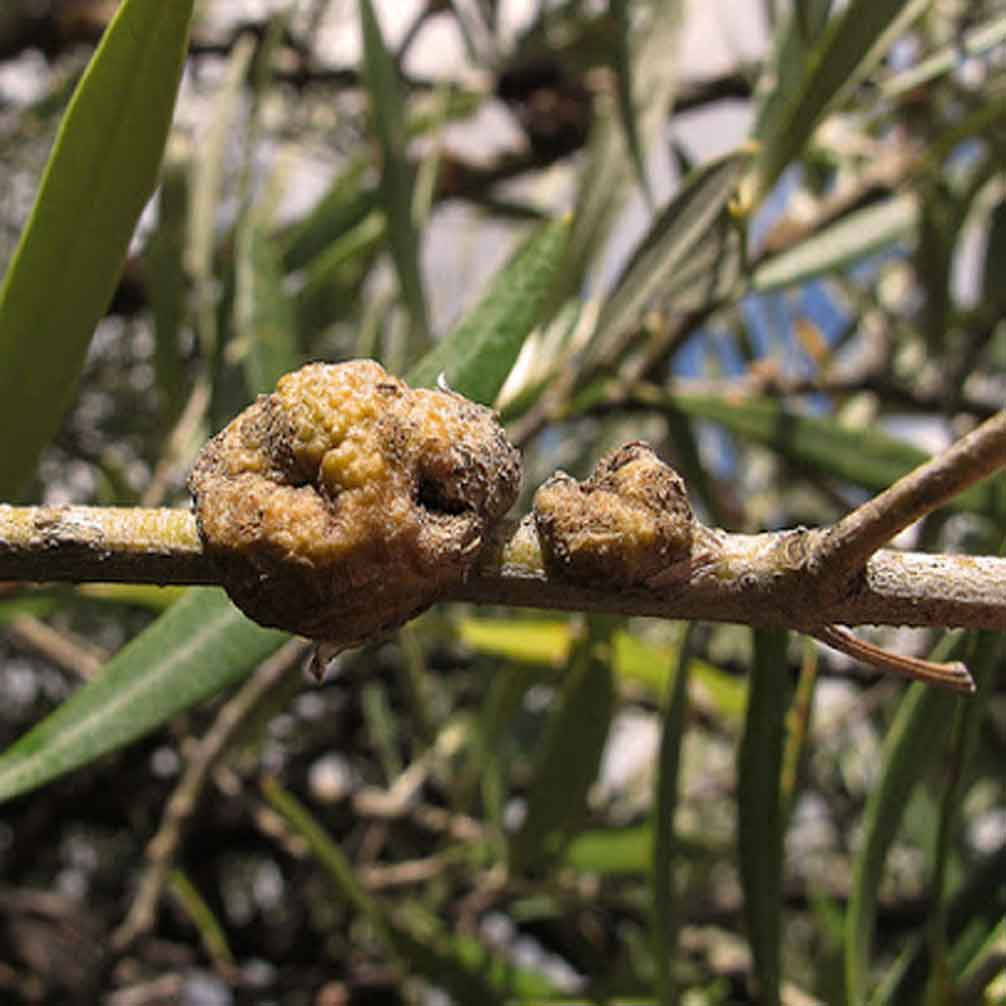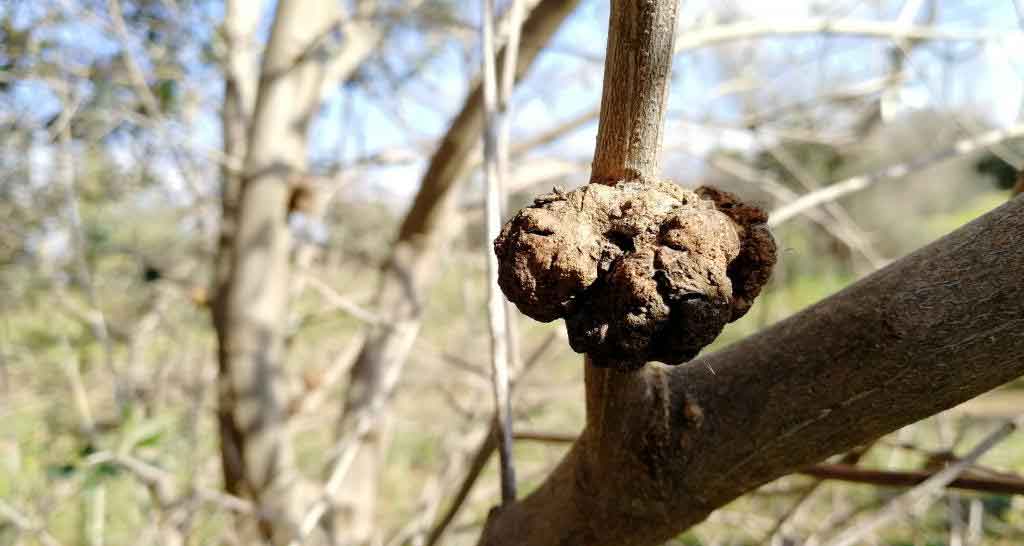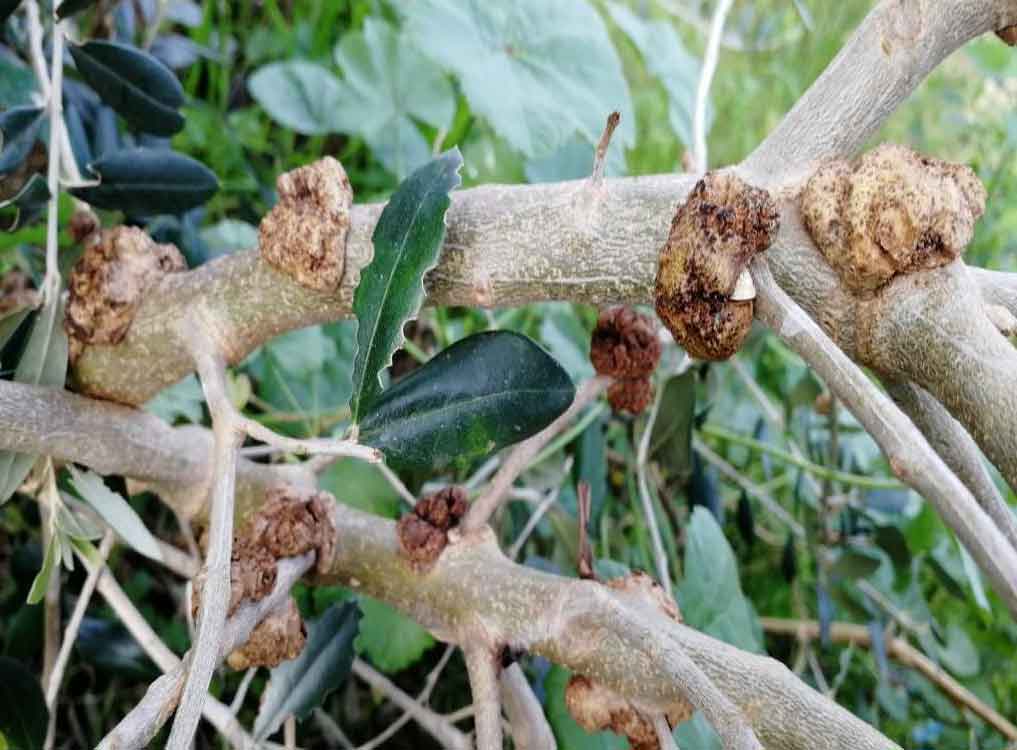|
|
| Pseudomonas Savastanoi pv. Savastanoi |
| Olive Diseases and Pests olive knot disease, caused by the bacterium Pseudomonas savastanoi pv. savastanoi, seriously affects olive trees (Olea europaea L.) mainly in Mediterranean countries, where climatic conditions often favor spread of the disease. Disease symptoms are characterized by tumorous outgrowths on different parts of infected plants, mainly shoots and branches. The development of these galls is dependent on bacterial production of the phytohormone indoleacetic acid and cytokinins (5,13,19,21), and more recently it has been reported that olive knot formation is hrp/hrcdependent strains of P. savastanoi pv. savastanoi isolated |
|
 |
| from olive knots were obtained from the Instituto Valenciano de Investigaciones Agrarias (IVIA) collection, and the type strain CFBP 1670T was obtained from the Collection Française de Bactéries Phytopathogènes (CFBP), INRA, Angers, France, as supplied by L. Gardan. Strains were routinely grown in King’s medium B (10) at 26°C. |
 |
Olive Diseases and Pests Pseudomonas Savastanoi pv. Savastanoi bacterial suspensions for plant inoculations were adjusted turbidometrically to densities of ca. 108 colony forming units (CFU) per ml (optical density at 600 nm = 0.5) in phosphate buffered saline (PBS) and 10-fold dilutions in PBS were prepared when appropriate. |
|
One-yearold plants of cvs. Arbequina, Blanqueta, Borriolenca, Manzanilla, Picual, and Villalonga were used to select the P. savastanoi pv. savastanoi strains for further experiments. Olive plants were wounded at three sites on the main stem and at two sites on lateral branches. Wounds of 0.5 cm long from the stem surface into the cambial area were made with a sterile scalpel.Olive plants of cvs. |
Pseudomonas Savastanoi pv. Savastanoi Nevadillo blanco de Jaén-cj, Lechín de Sevilla, and Mollar de Cieza were wounded at 10 sites on the main stem as described reviously. Increasing 10-fold doses of P. savastanoi pv. savastanoi strain IVIA 1628 from ca. 10 to 106 CFU were applied to wounds in 5-μl aliquots of PBS. Five to ten plants were inoculated per dose (50 to 100 wound sites per dose) in two independent experiments. Two plants were used as noninoculated control plants. |
 |
| The disease response for each dose was measured as the proportion of inoculated wound sites developing knots 3 months after inoculations In summary, based on the results of our study, we propose for evaluation of olive cultivars to olive knot disease take into account the development of primary knots after application of a low inoculum dose of two P. savastanoi pv. savastanoi strains. Using this method, most cultivars were clearly placed into three susceptibilitycategories; |
|
|
|

